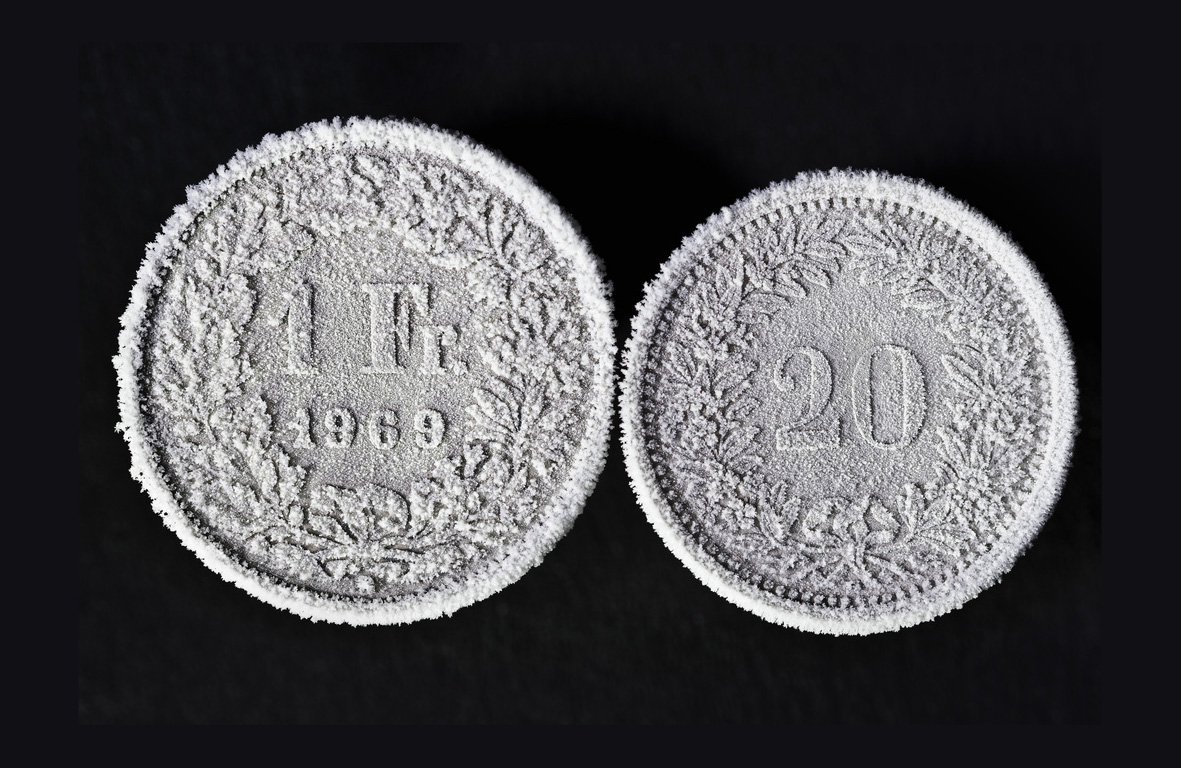ECB rate drop unlikely to challenge franc

The Swiss franc may come under short-term pressure from a fall in European Union interest rates, but analysts believe the CHF1.20 exchange rate floor with the euro will not be drastically tested by the European Central Bank’s (ECB) decision.
The ECB announced its latest measures to stimulate the EU economy on Thursday, including a lowering of the benchmark interest rate from 0.25% to 0.15% and negative interest rates on commercial bank deposits at the central bank.
One side effect of the measures is an almost certain weakening of the euro. The Swiss National Bank (SNB), which has defended the CHF1.20 franc-euro exchange rate since September 2011, indicated in April that it was bracing itself for another round of foreign currency stockpiling to keep the franc in check.
“The European crisis may have become somewhat less virulent, but it has not been overcome,” warned SNB chairman Thomas Jordan amid speculation of renewed ECB economic stimulus action.
“We remain ready to enforce the minimum exchange rate, if necessary, by purchasing foreign currency in unlimited quantities, and to take further measures as required,” he said.
“The international environment is still giving rise to high levels of uncertainty. Consequently, the danger that the Swiss franc, as a safe haven, might suddenly be subject to further upward pressure has not been averted.”
The franc-euro exchange rate has been hovering at around CHF1.22 for several weeks and did not show any immediate signs of wobbling straight after the ECB announcement.
Investors flocked to the safe haven franc following the 2008 financial crisis and subsequent global recession and eurozone crisis.
In October 2007, CHF1.67 bought a single euro but as this rate rapidly sank below the CHF1.50 mark the price of Swiss goods sold abroad soared.
Faced with an uncontrollably appreciating franc that threatened deflation and harmed exporters and the domestic tourism industry, the central bank decided in 2009 to buy up large quantities of euros.
Foreign currency holdings rose from CHF47.5 billion in 2008 to just under CHF95 billion by the end of 2009.
A second buying spree in 2010 saw reserves escalate dramatically to CHF204 billion.
But the forex intervention came at a steep CHF26.5 billion loss, resulting in an overall loss of CHF19.2 billion for the central bank at the end of 2010.
With the franc threatening to hit parity with the euro in August 2011 (reaching CHF1.04 on August 11), the SNB starting printing more money in huge quantities (an extra CHF170 billion was pumped into the markets in two weeks).
The measure only partially helped the situation, forcing the SNB to announce on September 6 that it would react against the “massive overvaluation” of the franc by enforcing an exchange rate floor of CHF1.20 against the euro.
The central bank stated that it would “no longer tolerate” an exchange rate below this threshold and would defend its policy by buying foreign currency in “unlimited quantities”.
Allure dimmed
Several observers believe that the franc’s safe haven status has been diminished since the worst of the euro crisis was averted in 2012. With the euro now in no real danger of collapsing, there is less incentive for investors to stampede to the franc to protect their assets.
“Swiss franc investors are often more risk-driven than yield-driven,” Pictet bank economists Bernard Lambert and Chloe Koos Dunand wrote last month. In other words, most people bolt to the franc to avoid losses, not to maximise profits.
The Pictet economists added that the latest ECB measures are intended as a shot of insulin to boost the eurozone economy, further removing the incentive for investors to get out of the currency.
Bank Sarasin chief economist Karsten Junius also believes that the franc has lost enough allure to dissuade hordes of people from turning to the Swiss currency in the long run. Investors would risk lower returns by moving into the franc that now offers less wealth preservation value than 2012.
“The large flows into the Swiss franc of yesteryear were due to the euro crisis, but now the eurozone has recovered,” he told swissinfo.ch. “The risk that premium investors paid for safe haven status is not justified anymore.”
“I don’t get the impression that the SNB will have to do anything in the next two weeks [before it meets to discuss monetary policy on June 19].”
SNB choices
That would present the perfect scenario for the SNB that has already been forced to double its foreign exchange reserves from CHF257 billion ($286 billion) in late 2011 to almost CHF500 billion at present. This massive stockpile, representing some 75% of total Swiss economic output, is already deemed far too dangerous by many politicians.
But the SNB has not had to intervene significantly in the foreign exchange markets since the end of 2012 and even managed to shave a few billion off its balance sheet last year. SNB chairman Thomas Jordan said two months ago that the central bank had the flexibility and purchasing power to go on another spending spree if required.
This would be more a more likely scenario than the SNB introducing negative interest rates if the franc-euro exchange rate limit of CHF1.20 starts to be threatened again.
With interest rates already at rock bottom, investors have been flocking into the housing market, raising property prices to dangerous levels. To restore order, the SNB would like to increase interest rates but is constrained by its strategy of defending the franc.

In compliance with the JTI standards
More: SWI swissinfo.ch certified by the Journalism Trust Initiative











You can find an overview of ongoing debates with our journalists here . Please join us!
If you want to start a conversation about a topic raised in this article or want to report factual errors, email us at english@swissinfo.ch.